Has the mystery of how the pyramids were built FINALLY been solved? Scientists discover a unique hydraulic lift system at Egypt’s iconic Pyramid of Djoser
It has long been debated: How exactly were the Great Pyramids of Egypt built by the civilized world’s first engineers?
According to a popular theory, the pyramid was built from the ground up, layer by layer, using a system of ropes and sledges to hoist stones to the top.
But new research suggests that the oldest pyramid in Egypt, the Pyramid of Djoser, was built 4,700 years ago using an even more ingenious ‘hydraulic lift’.
“The ancient Egyptians are known for their pioneering role and their mastery of hydraulics, particularly in building canals for irrigation purposes and ships for transporting enormous stones,” the team explains.
‘This work opens a new line of research: the use of hydraulic power to erect the enormous structures of the pharaohs.’
A new study suggests that the oldest pyramid in Egypt, the Pyramid of Djoser, was built using an ingenious ‘hydraulic lift’. A huge jet of water was blasted through the centre of the pyramid ‘like a volcano’, pushing the stones to the top, researchers believe
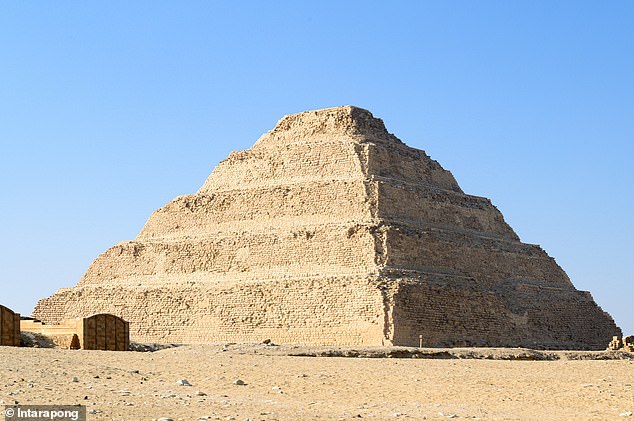
The Step Pyramid of Djoser is 60 meters high and is considered the first pyramid in Egypt.
The new theory is presented in a new study led by Xavier Landreau, president of Paleotechnic, an archaeological research institute in Paris, France.
The researchers studied historical documents and satellite photos of the area to interpret the features that supported their claim.
“We found that the internal architecture of the step pyramid is consistent with a hydraulic elevation mechanism that has never been reported before,” Landreau and colleagues said.
‘Ancient architects probably brought the stones up from the center of the pyramid in a volcanic way, using the sediment-free water.’
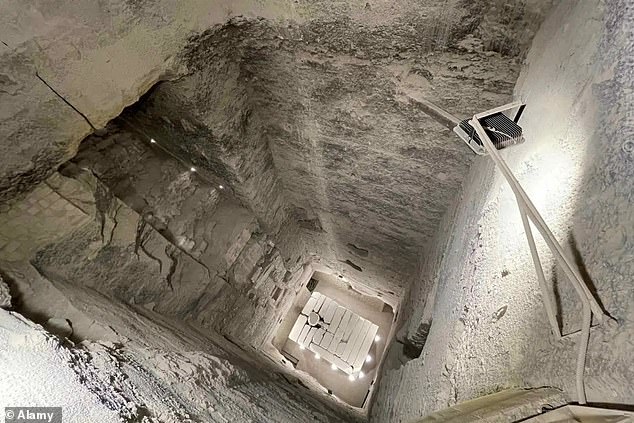
Although the shaft in the center of the pyramid (pictured) was already known, researchers now present a new theory about its purpose

The Pyramid of Djoser, the oldest pyramid in the world, was built 4,500 years ago south of modern Cairo, just east of the Nile, the longest river in the world.
The Pyramid of Djoser, about 60 meters high, is a “step pyramid,” meaning that its sides are a series of flat platforms or steps, unlike the relatively flat sides of the famous Pyramid of Giza.
Giza is the largest pyramid in Egypt, but Djoser is the oldest. It was built between 2667 and 2648 BC.
The impressive structure was built entirely of stone by the ancient Egyptian architect Imhotep in the vast Saqqara necropolis south of Cairo.
This is believed to be the final resting place of King Djoser, pharaoh of ancient Egypt and founder of the Old Kingdom.
Although it was already known that there was a huge shaft in the center of the pyramid, researchers now present a new theory about its purpose.
First, they point to Gisr el-Mudir, an ancient stone structure less than a mile west of the Pyramid of Djoser.
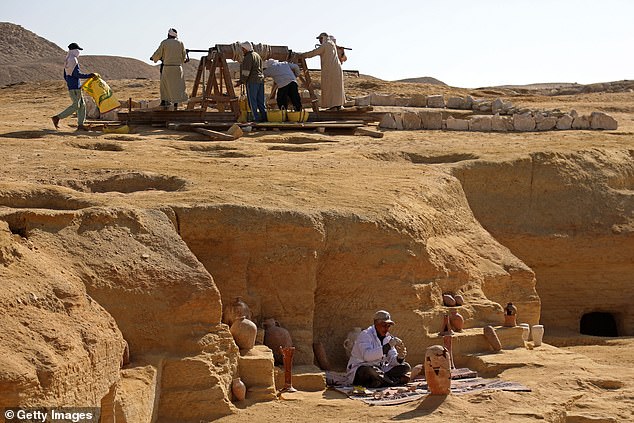
Gisr el-Mudir is one of the oldest known stone structures in Egypt, just a few hundred meters west of the Pyramid of Djoser. The function of the space has long been unclear. Pictured: Egyptian archaeologists at Gisr el-Mudir in January 2023
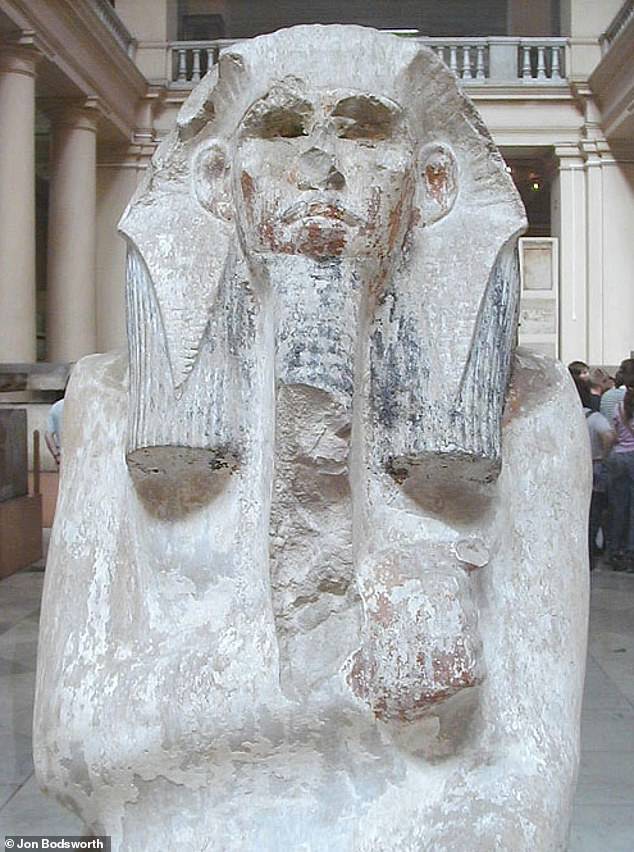
The Pyramid of Djoser is believed to be the final resting place of King Djoser (pictured), an ancient Egyptian pharaoh and founder of the Old Kingdom
The function of Gisr el-Mudir has never been fully understood, but researchers believe it may have functioned as a dam, collecting rainwater and channeling it through a system of pipes to the pyramid.
Once the underground water reached the center of the pyramid, it flowed up the central shaft, much like magma in a volcano.
This powerful jet of water would have propelled a floating elevator – a flat platform, probably made of wood – that could carry up to 100 tons of stone at a time thanks to the force of the water.
According to the experts, the water jet could be controlled so that the shaft could be emptied and reused for a new load of stones.
It is possible that the water at the base of the pyramid shaft is blocked, acting as a plug, before being released once the next load is put into place.
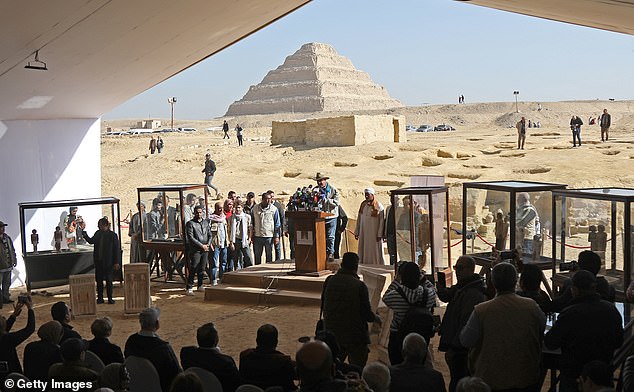
The Pyramid of Djoser reopened to visitors in 2020 after a 14-year restoration. Pictured in the background during a press conference in January 2023
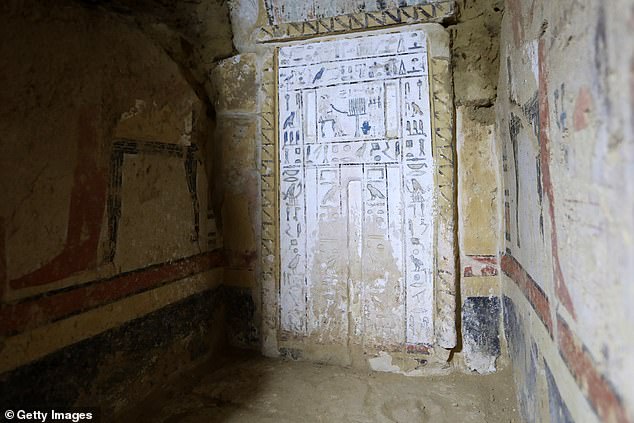
A view of pharaonic inscriptions at a tomb dating back to the Old Kingdom, at the site of the Step Pyramid of Djoser in Saqqara, January 26, 2023
While this new system may sound remarkably complex for 4,700 years ago, the pyramids themselves are evidence that the ancient Egyptians may have been more skilled engineers than we think.
Gisr el-Mudir was previously thought to be a cattle ranch, a ceremonial site for worshipping the gods, or even an unfinished pyramid.
But the theory that it was a dam provides a compelling link to the central shaft of the Pyramid of Djoser, which reopened to visitors in 2020 after a 14-year restoration.
It is unclear whether this construction technique was used on other famous pyramids in Egypt. MailOnline has contacted the experts for more information.
The new study outlining the theory has been published in the diary PLOS One.
